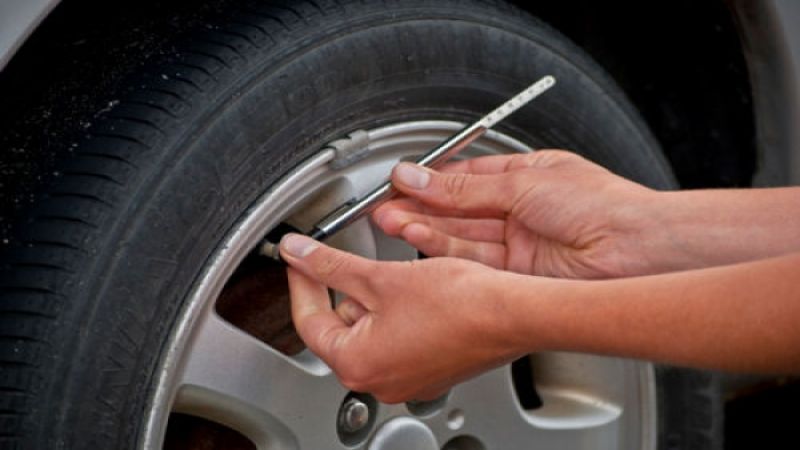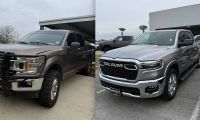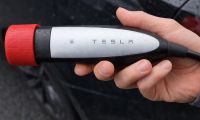With winter and cold coming upon more than half the nation, many drivers will take their Volkswagens, Audis and Porsches in for service. The service may be a quick oil change or a major safety check (systems check that shows the state of things like the brakes, tires, transmission and fluid and the like) or it may involve something somewhere in between.
Good Time For Winter ChecksTires Need Fighting Chance
To give your tires a fighting chance – and to keep a few more dollars in your wallet – there are three things that you must do. They are:
- Make sure that you go over the surface of your tire tread, taking any rocks or other items like glass and such out of the tread before it can harm the tire. Use a needle-nosed pliers to take care of stones, twigs and other detritus. If you find a nail may have penetrated the tread, you can have the tire patched, however, be sure that it is done correctly from the inside out.
- Make sure you inflate the tires to the proper pressure. You can find the pressure on the door frame or the glovebox door panel. You can also find it in your car’s owner manual. Remember to check the tire pressure before you have driven in the morning so that the air hasn’t had a chance to heat up. You can find a good tire gauge in any auto supply department, market or a big box store with an automotive department. The tire gauge should cost around $5.
- Rotate your car’s tires.According to the Tire and Rim Association, there are three rotation patterns which cover most vehicles. The first being the "Rearward Cross" -- front right to left rear; front left to right rear; right rear to right front; left rear to left front. There's the X-Pattern -- front right to left rear; front left to right rear; rear right to left front; left rrear to right front. And then there's the "Forward Cross" -- Left rear to right front; right rear to left front; left front to left rear; right front to right rear.













Comments
How can you publish such
Permalink
How can you publish such irresponsible crap! Yes, you need to check tire pressures and rotate the tires. But, you DONT find the proper pressure on the sidewall of the tire. That is the MAX pressure the tire should ever have. The pressure to inflate the tire is on the placard on the door frame and in the owners manual. As for rotation, front to rear same side USED To be the rule. It is now recommended to move the rears ro the front ..same side, and move the fronts to the rear after crossing left to right and right to left.
Let's see, did you read the
Permalink
Let's see, did you read the story I wrote? Look at the little diagram at the bottom of the story. It sort of speaks to your idea about rotating tires. What did you think I was advocating, the old X theory? That thinking went out when I wrote my first story about radials right around 1978 and I have been using the proper rotation ever since...I suggest you re-read the piece. As to your suggestion that the max pressure is on the sidewall. Usually, the max inflation pressure and the inflation pressure you find in the glovebox or on the doorframe are the same thing. Don't get caught up in the word Max. I know I am not.
Marc...it is apparent that
Permalink
In reply to Let's see, did you read the by Marc Stern
Marc...it is apparent that YOU did not read what I wrote. I did not advocate the old X theory and I know full well you did not either. What you advocated was simply moving F to R and R to F leaving tires on the same sides. This has been accepted practice since radial tires replaced bias ply. After being introduced in Europe, what has now become accepted practice by tire professionals is what I said earlier; RR to RF and LR to LF, then the fronts are moved to the rear RF to LR and LF to RR. As for the tire pressure imprinted on the side wall of the tire, I stand by my earlier comments. It shows the maximum pressure recommended by the tire manufacturer and it is not the same as the pressure on the door frame placard which is the pressure recommended by the vehicle (not the tire) manufacturer. Following your theory, every vehicle that uses a particular tire would have the same recommended tire pressure. That, of course is absurd. Each vehicle manufacturer specifies its own recommended tire pressure, after extensive vehicle testing.
as the
I did a bit of checking and
Permalink
In reply to Marc...it is apparent that by Bill (not verified)
I did a bit of checking and you are 100 percent correct. I have fixed the text of the story to comply. I have to thank reader Bill for his smart work in calling out something that had to be fixed. It makes the story much better. Thanks, again.